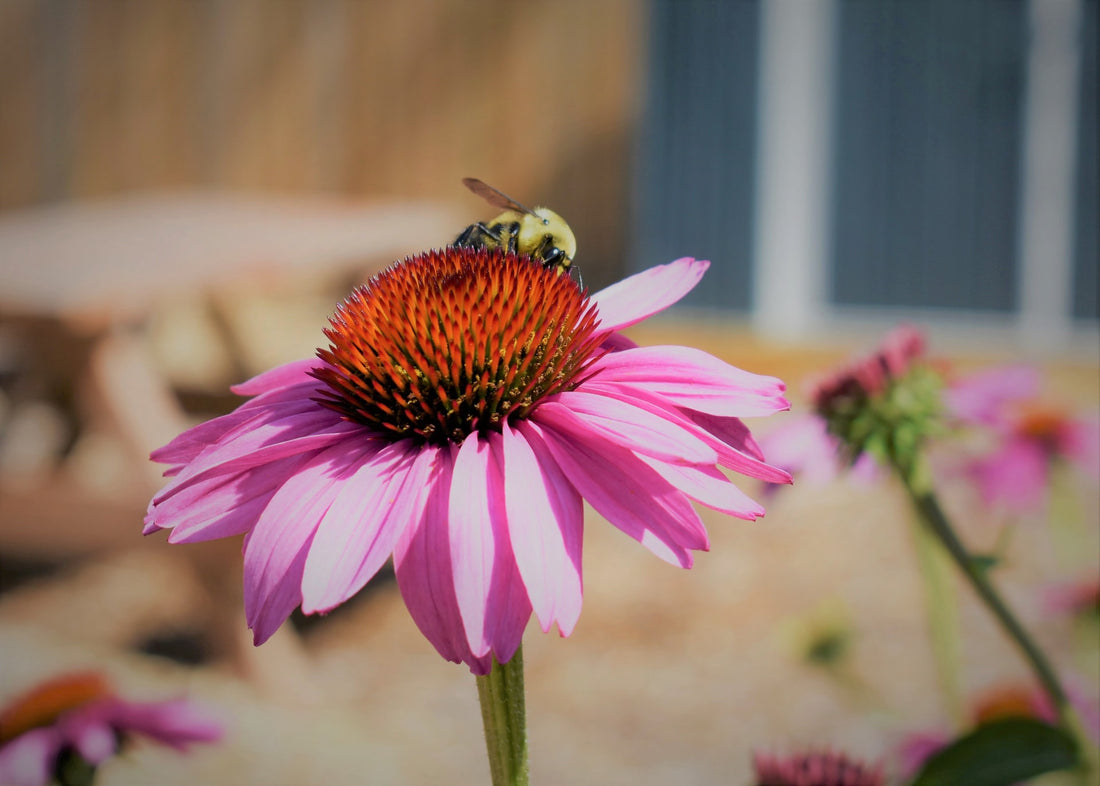Every garden needs some superhero insects to thrive. Bees, butterflies, and beneficial insects make our gardening efforts easier and more productive. They pollinate our plants and eat pesky, destructive bugs, reducing the need for pesticides and saving our plants from ruin.
Every bee, butterfly, and beneficial insect has preferences as to what type of nectar they seek. This means it is important for gardeners to plant a variety of flowers to attract them and tailor the types of flowers to the insects. Thankfully, some flowers appeal to a wide range of insects
.
To provide the most appeal, plant for all seasons. Bees and beneficial insects need food in spring, summer, and fall. It will not be desirable to them if all the flowers you plant bloom in spring, and then they are left with nothing
to eat later on. Diversity is vital!
Most beneficial insects prefer large swathes of flowers. They find big patches appealing and are more likely to make them home.
Alyssum
This plant is powerfully alluring to aphids, a serious and prolific garden pest. It may sound odd to plant a flower that the pests love, but there is a good reason. The hoverfly, a beneficial insect, loves to eat aphids, and life doesn't get much better for the hoverfly when a buffet of aphids presents itself all in one location. It's a win-win! The more hoverflies that are kept happy and fed, the less you have to deal with aphids.
- Sweet Royal Carpet - pink
- Basket of Gold - yellow
- Carpet of Snow - white
Sunflowers
Not only do humans love sunflowers, but bees also do. Honeybees, in particular, are drawn to sunflowers. Plant orange or yellow sunflowers; bees can't see red and therefore won't see red sunflowers. The thousands of tiny little flowers in the sunflower head can feed multitudes of beneficial insects.
- Lemon Queen - yellow
- Autumn Beauty - bronze, gold, burgundy
- Teddy Bear Dwarf - orange yellow
- All Sorts - mix of colors and sizes
Yarrow
A hardy perennial, Yarrow produces large disks of tiny white flowers, which the bees adore. The umbel, or umbrella-like, shape of the flowers adds variety to the garden. Ladybugs, hoverflies, lacewings, and spiders use the foliage to lay eggs and find refuge, which is essential for keeping these beneficial insects as residents in the garden.
- Western Yarrow - white
Coneflower
Honeybees love the nectar of coneflower and will happily hang out in your garden if it is there. Butterflies and beneficial moths also are drawn to it, making a patch of coneflower a vital part of a garden. This flower blooms in summer and has a long season that extends into fall.
- Echinacea Coneflower - purple
- Dwarf Red - red
Calendula
Calendula is an insect magnet. It attracts many beneficial and pests alike, often keeping these bugs off your other plants because it is so appealing. It exudes an irresistible sticky substance that smaller pests, like whiteflies and aphids, are drawn to and get stuck in. When bees, butterflies, and lacewings show up to enjoy the Calendula flowers, they not only have the nectar to enjoy, they also can feast on the stuck bugs. The bright flowers will bloom from late Spring until Autumn.
- Orange Pacific Beauty - orange
- Cream Pacific Beauty - white
Cosmos
An easy-to-grow flower that blooms super fast, this is a must-have in all gardens. It will be one of the first food sources for butterflies and bees. They will bloom all season long too. Many types of bees enjoy the nectar and pollen, and some even enjoy eating the flower itself.
- Cosmos Daydream - pastel pink
- Cosmos Klondyke - orange
- Cosmos Sulphur - lemon yellow, dwarf
How To Attract Bees And Beneficial Insects
All insects need the basics of life, just like people: food, water, and shelter. We've already discussed food as that is what the flowers will provide. Supplying a water source and places the insects can shelter will significantly enhance your garden's population of beneficial insects.Small hiding places, like bunches of twigs or wood, hollow branches, hedges, and shrubs are ideal for providing shelter to insects. Various sites should be made available around the garden, so the bees and insects have options and don't feel crowded. A birdbath or rain catchment is easy to add to a garden and will encourage beneficial insects and bees to stay. Put a few rocks or sticks in the water, so the insects have a safe place to land. Butterflies love gathering together socially around water sources.
As you plan your garden, don't forget these beautiful insects that make our lives easier by doing so much work. Beneficial insects deserve to be treated to the most delicious array of flowers possible. When we provide an array of flowers for the bees and butterflies and all the pollinators, it isn't just our garden that benefits; the natural environment becomes a better place, as well.



